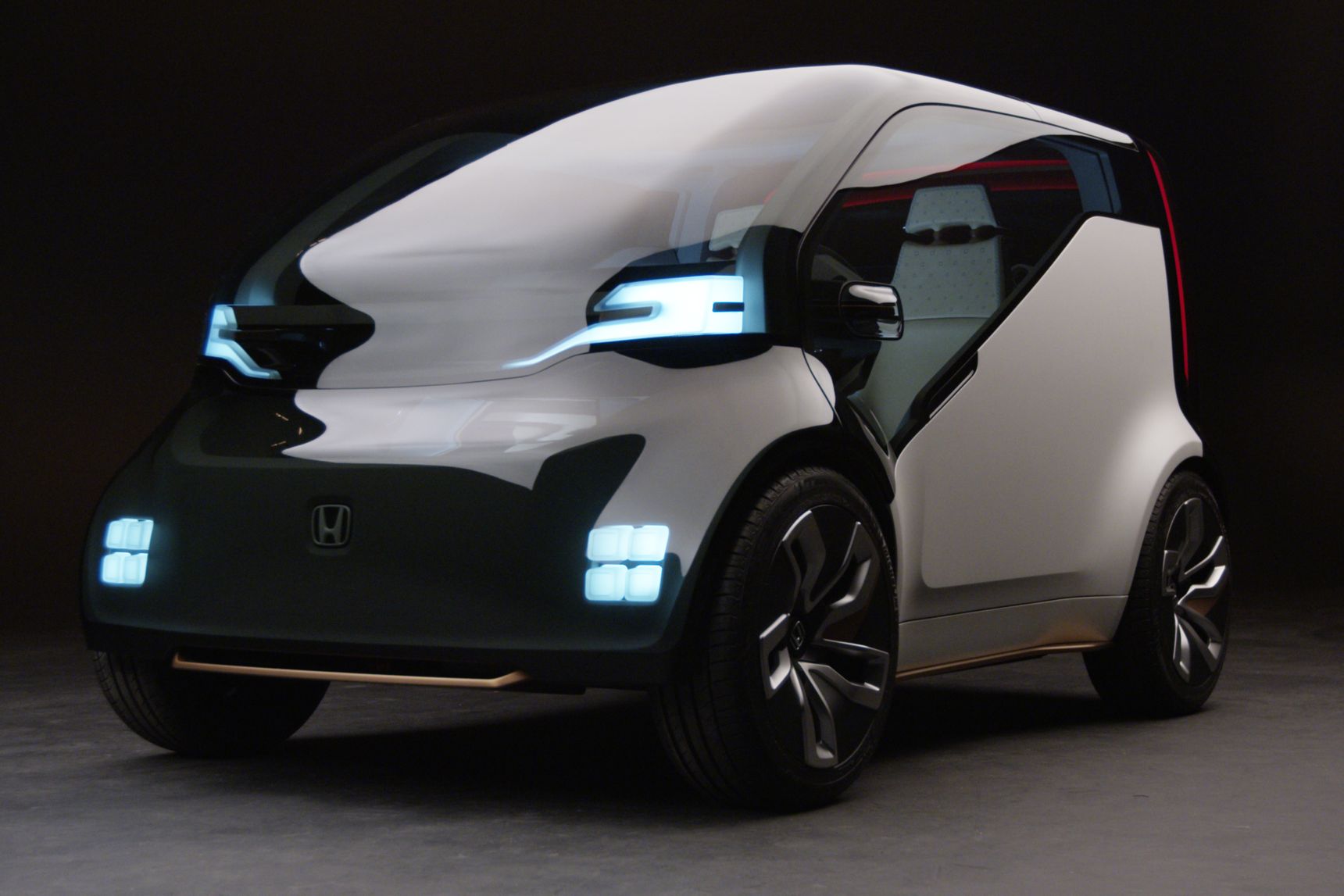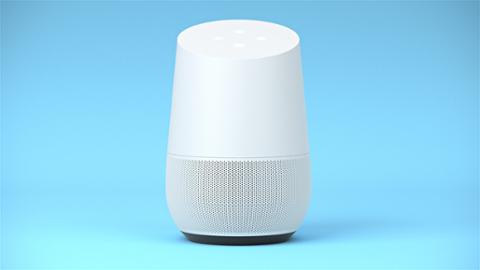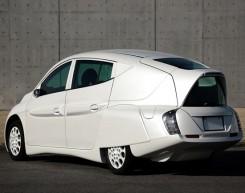 Honda's NeuV has advanced A.I.[/caption] When you’re not driving your car, chances are it’s sitting in a driveway, garage, or parking space. Honda wants to change that: At CES 2017, it unveiled the New Electric Urban Vehicle (NeuV, pronounced ‘new-v’) concept car, which will transform your daily driver from a regular piece of machinery to one that learns your preferences and drives people around while you sleep. As auto hardware goes, NeuV is similar to any other concept car. It has a lot of bells and whistles that delight, but likely won’t make it to production (if it ever gets that far). The entire dash is designed to be a screen, and there’s an electric skateboard in the rear hatch for making the final approach to your destination after parking. A 20kWh battery and dual 56kW motors power the vehicle along. NeuV is also tiny. It has roughly the same footprint as a Scion xA, a two-seater ideal for dense metro areas. But software is where NeuV really gets interesting. Honda’s plans include its Honda Automated Network Assistant (HANA). HANA is designed to be a personal, adaptive in-car digital assistant; it can gauge your emotions, learn your decision-making tells and monitor your behavior. From there, it tries to mold itself into a capable assistant for each situation (a digital yin to your yang, so to speak). So while you’re driving aggressively through downtown side-streets, trying to make a meeting, HANA might put on some soothing music and offer to call ahead to let them know you’ll be five minutes late. It may even encourage you to slow down and take it easy so you don’t end up crashing into another vehicle or a wall. When you’re not enjoying HANA, it can transform your car into a ride-sharing vehicle. Honda says NeuV can be programed to pick riders up and drop them off at a destination, which suggests it may be able to link to a ride-sharing platform such as Uber. Recently, Uber began testing full autonomous ride-sharing in California. If it’s not somehow tethered to an existing hailing service, Honda may have to work out its own network of drivers/riders for NeuV, though it seems a bit niche to do so. NeuV can also sell its unused energy back to the grid. “We designed NeuV to become more valuable to the owner by optimizing and monetizing the vehicle’s downtime,” said Mike Tsay, Principal Designer at Honda R&D Americas.
Honda's NeuV has advanced A.I.[/caption] When you’re not driving your car, chances are it’s sitting in a driveway, garage, or parking space. Honda wants to change that: At CES 2017, it unveiled the New Electric Urban Vehicle (NeuV, pronounced ‘new-v’) concept car, which will transform your daily driver from a regular piece of machinery to one that learns your preferences and drives people around while you sleep. As auto hardware goes, NeuV is similar to any other concept car. It has a lot of bells and whistles that delight, but likely won’t make it to production (if it ever gets that far). The entire dash is designed to be a screen, and there’s an electric skateboard in the rear hatch for making the final approach to your destination after parking. A 20kWh battery and dual 56kW motors power the vehicle along. NeuV is also tiny. It has roughly the same footprint as a Scion xA, a two-seater ideal for dense metro areas. But software is where NeuV really gets interesting. Honda’s plans include its Honda Automated Network Assistant (HANA). HANA is designed to be a personal, adaptive in-car digital assistant; it can gauge your emotions, learn your decision-making tells and monitor your behavior. From there, it tries to mold itself into a capable assistant for each situation (a digital yin to your yang, so to speak). So while you’re driving aggressively through downtown side-streets, trying to make a meeting, HANA might put on some soothing music and offer to call ahead to let them know you’ll be five minutes late. It may even encourage you to slow down and take it easy so you don’t end up crashing into another vehicle or a wall. When you’re not enjoying HANA, it can transform your car into a ride-sharing vehicle. Honda says NeuV can be programed to pick riders up and drop them off at a destination, which suggests it may be able to link to a ride-sharing platform such as Uber. Recently, Uber began testing full autonomous ride-sharing in California. If it’s not somehow tethered to an existing hailing service, Honda may have to work out its own network of drivers/riders for NeuV, though it seems a bit niche to do so. NeuV can also sell its unused energy back to the grid. “We designed NeuV to become more valuable to the owner by optimizing and monetizing the vehicle’s downtime,” said Mike Tsay, Principal Designer at Honda R&D Americas.
The A.I. Assistant Already Inside Your Next Car
[caption id="attachment_139125" align="aligncenter" width="1720"]  Honda's NeuV has advanced A.I.[/caption] When you’re not driving your car, chances are it’s sitting in a driveway, garage, or parking space. Honda wants to change that: At CES 2017, it unveiled the New Electric Urban Vehicle (NeuV, pronounced ‘new-v’) concept car, which will transform your daily driver from a regular piece of machinery to one that learns your preferences and drives people around while you sleep. As auto hardware goes, NeuV is similar to any other concept car. It has a lot of bells and whistles that delight, but likely won’t make it to production (if it ever gets that far). The entire dash is designed to be a screen, and there’s an electric skateboard in the rear hatch for making the final approach to your destination after parking. A 20kWh battery and dual 56kW motors power the vehicle along. NeuV is also tiny. It has roughly the same footprint as a Scion xA, a two-seater ideal for dense metro areas. But software is where NeuV really gets interesting. Honda’s plans include its Honda Automated Network Assistant (HANA). HANA is designed to be a personal, adaptive in-car digital assistant; it can gauge your emotions, learn your decision-making tells and monitor your behavior. From there, it tries to mold itself into a capable assistant for each situation (a digital yin to your yang, so to speak). So while you’re driving aggressively through downtown side-streets, trying to make a meeting, HANA might put on some soothing music and offer to call ahead to let them know you’ll be five minutes late. It may even encourage you to slow down and take it easy so you don’t end up crashing into another vehicle or a wall. When you’re not enjoying HANA, it can transform your car into a ride-sharing vehicle. Honda says NeuV can be programed to pick riders up and drop them off at a destination, which suggests it may be able to link to a ride-sharing platform such as Uber. Recently, Uber began testing full autonomous ride-sharing in California. If it’s not somehow tethered to an existing hailing service, Honda may have to work out its own network of drivers/riders for NeuV, though it seems a bit niche to do so. NeuV can also sell its unused energy back to the grid. “We designed NeuV to become more valuable to the owner by optimizing and monetizing the vehicle’s downtime,” said Mike Tsay, Principal Designer at Honda R&D Americas.
Honda's NeuV has advanced A.I.[/caption] When you’re not driving your car, chances are it’s sitting in a driveway, garage, or parking space. Honda wants to change that: At CES 2017, it unveiled the New Electric Urban Vehicle (NeuV, pronounced ‘new-v’) concept car, which will transform your daily driver from a regular piece of machinery to one that learns your preferences and drives people around while you sleep. As auto hardware goes, NeuV is similar to any other concept car. It has a lot of bells and whistles that delight, but likely won’t make it to production (if it ever gets that far). The entire dash is designed to be a screen, and there’s an electric skateboard in the rear hatch for making the final approach to your destination after parking. A 20kWh battery and dual 56kW motors power the vehicle along. NeuV is also tiny. It has roughly the same footprint as a Scion xA, a two-seater ideal for dense metro areas. But software is where NeuV really gets interesting. Honda’s plans include its Honda Automated Network Assistant (HANA). HANA is designed to be a personal, adaptive in-car digital assistant; it can gauge your emotions, learn your decision-making tells and monitor your behavior. From there, it tries to mold itself into a capable assistant for each situation (a digital yin to your yang, so to speak). So while you’re driving aggressively through downtown side-streets, trying to make a meeting, HANA might put on some soothing music and offer to call ahead to let them know you’ll be five minutes late. It may even encourage you to slow down and take it easy so you don’t end up crashing into another vehicle or a wall. When you’re not enjoying HANA, it can transform your car into a ride-sharing vehicle. Honda says NeuV can be programed to pick riders up and drop them off at a destination, which suggests it may be able to link to a ride-sharing platform such as Uber. Recently, Uber began testing full autonomous ride-sharing in California. If it’s not somehow tethered to an existing hailing service, Honda may have to work out its own network of drivers/riders for NeuV, though it seems a bit niche to do so. NeuV can also sell its unused energy back to the grid. “We designed NeuV to become more valuable to the owner by optimizing and monetizing the vehicle’s downtime,” said Mike Tsay, Principal Designer at Honda R&D Americas.
 Honda's NeuV has advanced A.I.[/caption] When you’re not driving your car, chances are it’s sitting in a driveway, garage, or parking space. Honda wants to change that: At CES 2017, it unveiled the New Electric Urban Vehicle (NeuV, pronounced ‘new-v’) concept car, which will transform your daily driver from a regular piece of machinery to one that learns your preferences and drives people around while you sleep. As auto hardware goes, NeuV is similar to any other concept car. It has a lot of bells and whistles that delight, but likely won’t make it to production (if it ever gets that far). The entire dash is designed to be a screen, and there’s an electric skateboard in the rear hatch for making the final approach to your destination after parking. A 20kWh battery and dual 56kW motors power the vehicle along. NeuV is also tiny. It has roughly the same footprint as a Scion xA, a two-seater ideal for dense metro areas. But software is where NeuV really gets interesting. Honda’s plans include its Honda Automated Network Assistant (HANA). HANA is designed to be a personal, adaptive in-car digital assistant; it can gauge your emotions, learn your decision-making tells and monitor your behavior. From there, it tries to mold itself into a capable assistant for each situation (a digital yin to your yang, so to speak). So while you’re driving aggressively through downtown side-streets, trying to make a meeting, HANA might put on some soothing music and offer to call ahead to let them know you’ll be five minutes late. It may even encourage you to slow down and take it easy so you don’t end up crashing into another vehicle or a wall. When you’re not enjoying HANA, it can transform your car into a ride-sharing vehicle. Honda says NeuV can be programed to pick riders up and drop them off at a destination, which suggests it may be able to link to a ride-sharing platform such as Uber. Recently, Uber began testing full autonomous ride-sharing in California. If it’s not somehow tethered to an existing hailing service, Honda may have to work out its own network of drivers/riders for NeuV, though it seems a bit niche to do so. NeuV can also sell its unused energy back to the grid. “We designed NeuV to become more valuable to the owner by optimizing and monetizing the vehicle’s downtime,” said Mike Tsay, Principal Designer at Honda R&D Americas.
Honda's NeuV has advanced A.I.[/caption] When you’re not driving your car, chances are it’s sitting in a driveway, garage, or parking space. Honda wants to change that: At CES 2017, it unveiled the New Electric Urban Vehicle (NeuV, pronounced ‘new-v’) concept car, which will transform your daily driver from a regular piece of machinery to one that learns your preferences and drives people around while you sleep. As auto hardware goes, NeuV is similar to any other concept car. It has a lot of bells and whistles that delight, but likely won’t make it to production (if it ever gets that far). The entire dash is designed to be a screen, and there’s an electric skateboard in the rear hatch for making the final approach to your destination after parking. A 20kWh battery and dual 56kW motors power the vehicle along. NeuV is also tiny. It has roughly the same footprint as a Scion xA, a two-seater ideal for dense metro areas. But software is where NeuV really gets interesting. Honda’s plans include its Honda Automated Network Assistant (HANA). HANA is designed to be a personal, adaptive in-car digital assistant; it can gauge your emotions, learn your decision-making tells and monitor your behavior. From there, it tries to mold itself into a capable assistant for each situation (a digital yin to your yang, so to speak). So while you’re driving aggressively through downtown side-streets, trying to make a meeting, HANA might put on some soothing music and offer to call ahead to let them know you’ll be five minutes late. It may even encourage you to slow down and take it easy so you don’t end up crashing into another vehicle or a wall. When you’re not enjoying HANA, it can transform your car into a ride-sharing vehicle. Honda says NeuV can be programed to pick riders up and drop them off at a destination, which suggests it may be able to link to a ride-sharing platform such as Uber. Recently, Uber began testing full autonomous ride-sharing in California. If it’s not somehow tethered to an existing hailing service, Honda may have to work out its own network of drivers/riders for NeuV, though it seems a bit niche to do so. NeuV can also sell its unused energy back to the grid. “We designed NeuV to become more valuable to the owner by optimizing and monetizing the vehicle’s downtime,” said Mike Tsay, Principal Designer at Honda R&D Americas.



